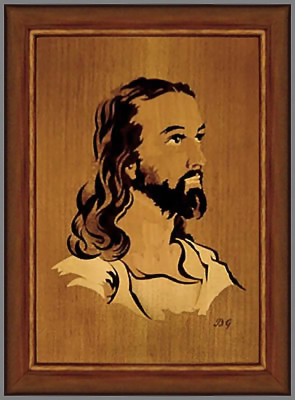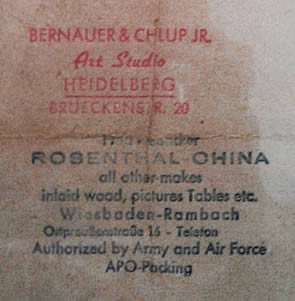|
 |
|
May's update brings you a lovely religious work by the Buchschmid and Gretaux Wood Inlay Company's studios. This is of the Christ Head which was much of a favourite with Herr. Otto Chlup the owner of ABC Studios in Heidelberg who was the principal representative for the Buchschmid and Gretaux Wood Inlay Company. |
Our May update features the very collectable Christ Head (Christus Kopf) wood inlay picture by Buchschmid and Gretaux. This was one of their much favoured pieces and along with the Praying Hands piece it forms a much sought after pair of religious pieces from the B & G studios. There was an accompanying document that went with this picture, and we have reprinted it for you on this page. It describes the work of Buchschmid and Gretaux in their own words. The Bernauer & Chlup JR. official stamp verifies the authenticity of the piece and the documentation. As the saying goes these days - enjoy! Thanks go to Beverly Mead for sending this in to us. |
|
|||||||||||
Information on the valuation of Wood Inlay or Marquetry pieces Please note that we (The Marquetry Society) are unable to give market reference valuations on any marquetry, or wood inlay works, or pieces of any kind. Quick Links to the other pages in this series: Next set of 'Can We Halp?' Pages from 51 onwards: >>> |
- |
|||||||||||
If you are using a different E-mail system to the M/S Outlook Express that our link boxes are utilising and your e-mail client will not open when you click the box, just copy and paste the following address into your "send to" box: info@marquetry.org or, if that is not possible, then just type it in as seen above, thanks. |
||||||||||||

